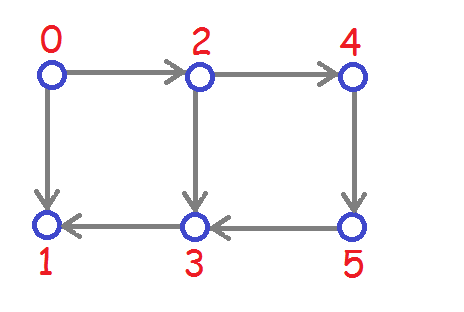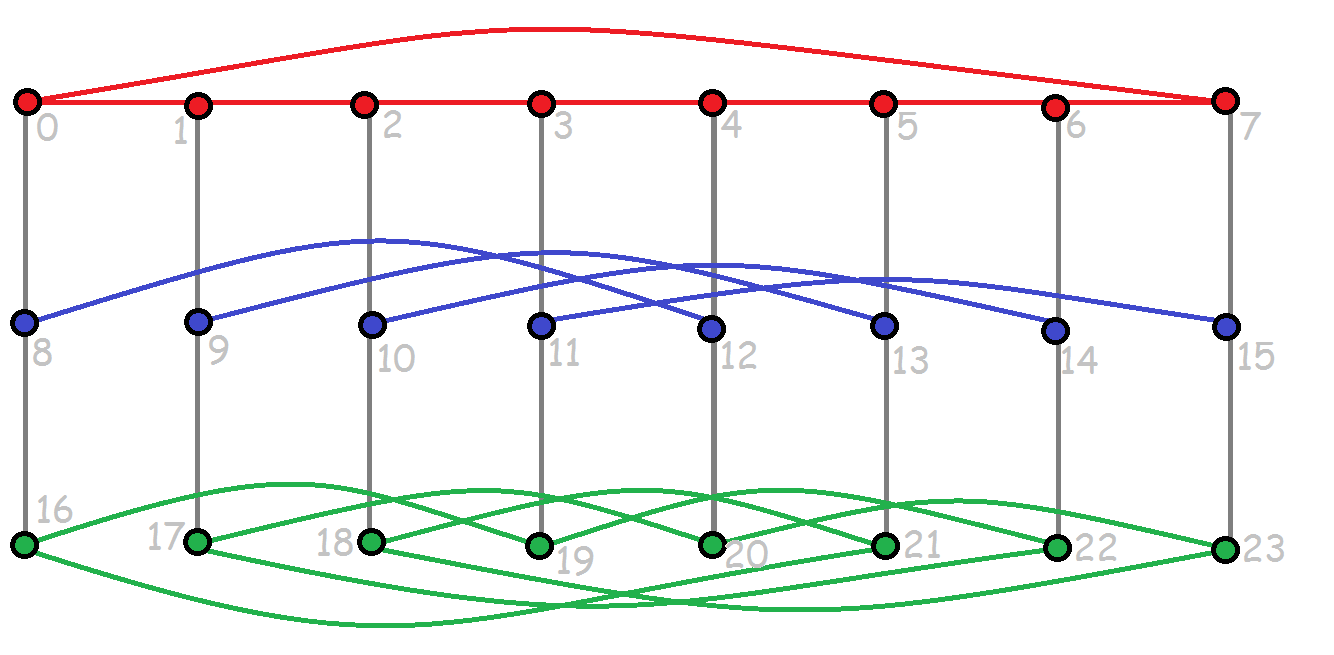(a) [2] Label the remaining vertices with 2, 3, ... according to their Breadth-First indices.
(b) [2] Colour the BFS tree arcs with a GREEN pen and direct these arcs so that the arc for each vertex u is directed from u to the parent of u in the BFS tree.
(c) [4] Complete this to a Pfaffian orientation by colouring the remaining directed edges with a RED pen.
(d) [2] Number the red edges 1, 2, 3, ... in the same order as you used when making your decisions about how to orient the edges.

(a) [3] List all the perfect matchings of G.
(b) [3] Write down the skew-symmetric adjacency matrix A which corresponds to this Pfaffian orientation. Note: skew symmetric means that if ai,j = c, then aj,i = -c.
(c) [8] Compute the determinant of your matrix from (c) by applying Gaussian elimination to the matrix until it is upper triangular keeping track of what each operation is doing to the determinant as you go along. Make sure you indicate what you are doing at every step, and how it affects the determinant.
(d) [6] Which non-zero terms of the determinant correspond to having a pair of matchings where the first one is the matching which contains the edge (2,3)? Show the corresponding sub-matrices of A and for each one, draw the pair of perfect matchings with the edges of the first matching colored red and the edges of the second matching colored blue.
Important note for error checking on the next question: the McGee graph has 24 vertices and the extra ones are at distance 4 from the root.
The McGee graph:

Put your answers on the attached Question 4 worksheet.
(a) [3] Do a BFS on the McGee graph starting at the leftmost red vertex (vertex 0). What I want you to indicate on the picture is just the distance of each vertex from the root of the BFS tree. The starting vertex is at distance 0 from itself. For error detection: ensure you have the correct counts as per the previous question.
(b) [4] Do a BFS on the McGee graph starting at the leftmost blue vertex (vertex 8). What I want you to indicate on the picture is just the distance of each vertex from the root of the BFS tree.
(c) [3] Do a BFS on the McGee graph starting at the leftmost green vertex (vertex 16). What I want you to indicate on the picture is just the distance of each vertex from the root of the BFS tree.
(0 1 2 3 4 5 6 7)(8 9 10 11 12 13 14 15)(16 17 18 19 20 21 22 23)
is an automorphism of the graph. The aim of this question is to determine if some other symmetries are present.
(a) [4] Does the McGee graph have an automorphism which maps some red vertex to a blue vertex? If your answer is yes, show the automorphism on the attached Question 5(a) worksheet. If you say no, justify your answer. Hint: consider the vertices at distance 4 from the root of the BFS tree from your answers from the previous question.
(b) [4] Does the McGee graph have an automorphism which maps some red vertex to a green vertex? If your answer is yes, show the automorphism on the attached Question 5(b) worksheet. If you say no, justify your answer.
(c)
[4]
Does the McGee graph have a symmetry which reverses the top
8-cycle? That is, the symmetry starts out like this:
(0) (1 7) (2 6) (3 5) (4) ...
If your answer is yes, show the automorphism on the
attached
Question 5(c) worksheet.
If you say no, justify your answer.
(d) [3] What is the automorphism group order of the McGee graph? Hint: the only types of symmetries it has are the types you have explored so far. Explain your answer in terms of what the symmetries do to the vertices of the graph.
- The edges which are in the BFS tree of v that goes down to the vertices at distance at most 3 from v.
- Chords connecting pairs of vertices at distance 3 from v.
- Edges between one vertex at distance 3 from v and another one at distance 4.
- Edges between two vertices at distance 4.
(a) [1] Apply the hints above to count the number of 7-cycles containing one specific red vertex.
(b) [1] Apply the hints above to count the number of 7-cycles containing one specific blue vertex.
(c) [1] Apply the hints above to count the number of 7-cycles containing one specific green vertex.
(d) [7] Use the information from parts (a), (b) and (c) to determine the number of 7-cycles in the McGee graph.
A worksheet has been provided for your use for the next two questions. You should print this and use it for your answers.
(b) [3] Show the cut in the network obtained by letting P be the set of vertices reachable from s in the final auxillary graph of part (a).
(c) [2] Show that there can be more than one maximum flow in a network by giving a maximum flow for N which is different from the one you found in part (a).